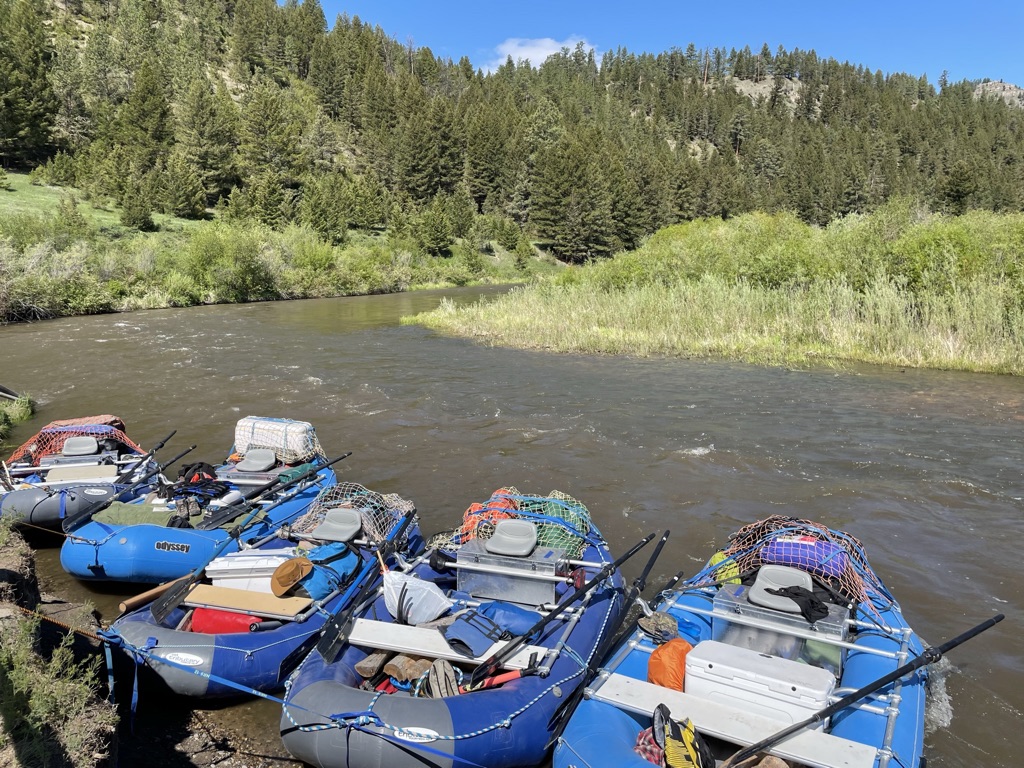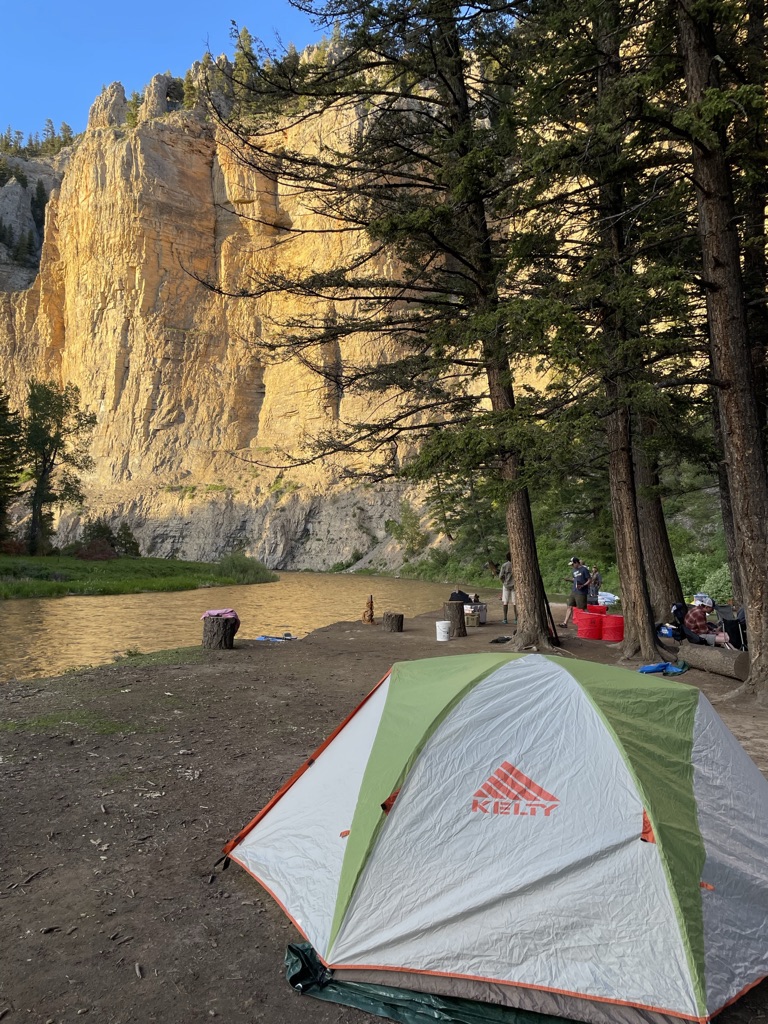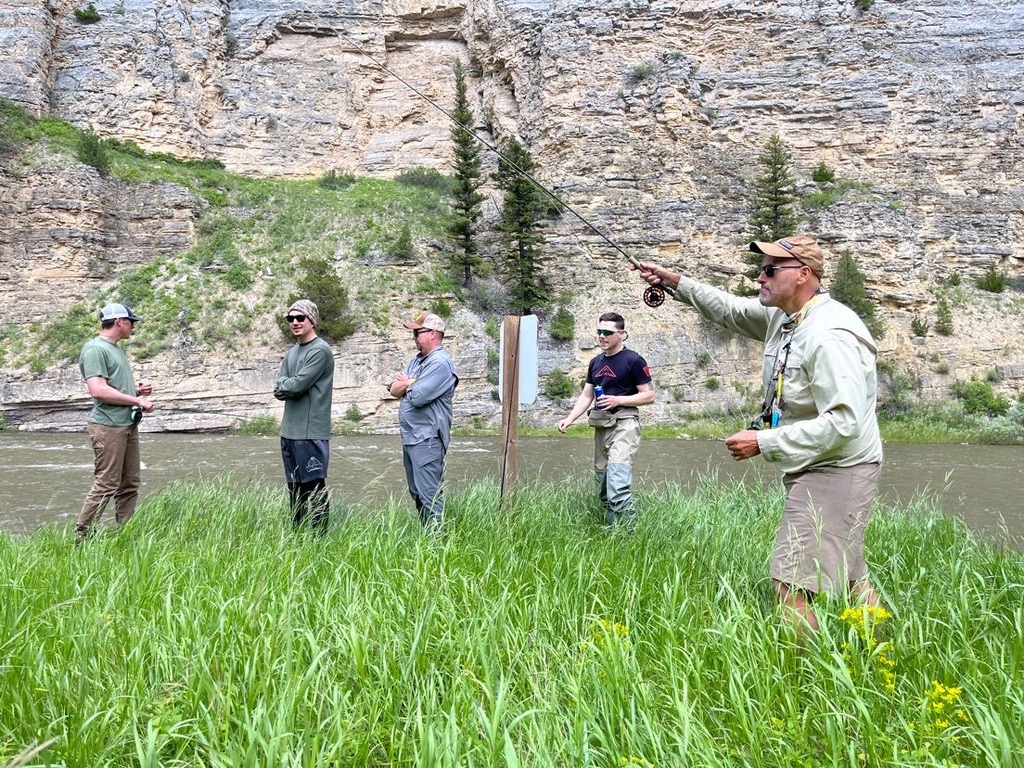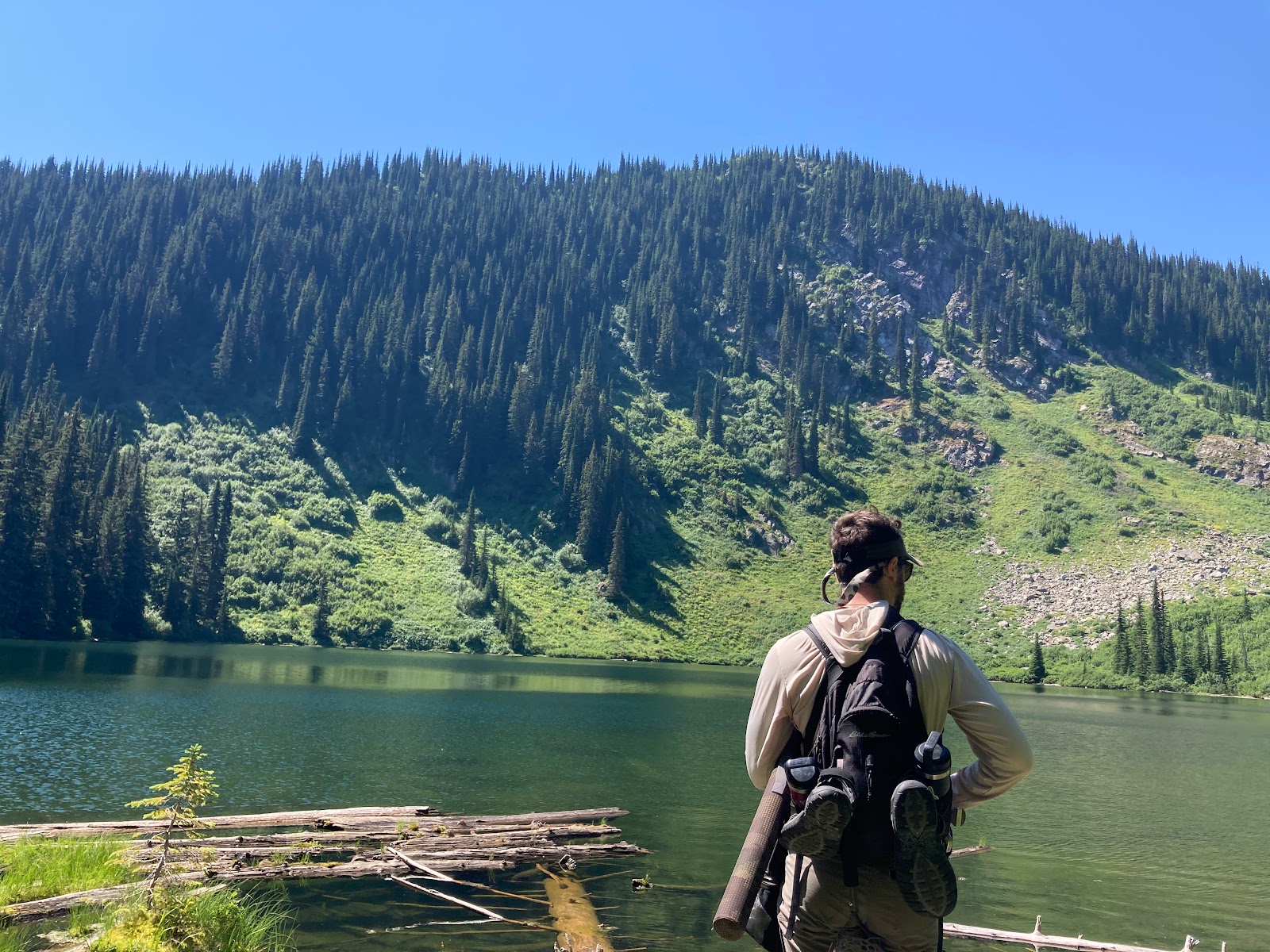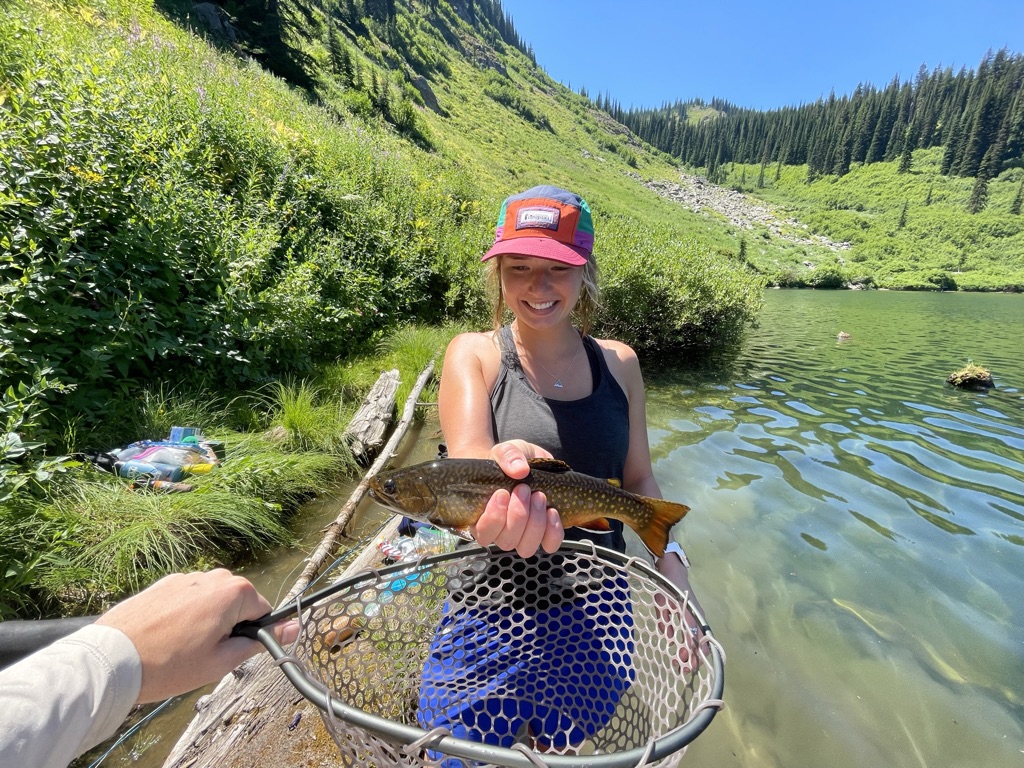Thursday, January 25, 2024
Montana River Adventure: Smith River
Thursday, January 18, 2024
Lessons Learned: From Montana to Wisconsin
Montana has always been my fly fishing comfort zone. For the past six years, it has also been the place I called home. This great state is where I cut my teeth each day on the river, learning how to fly fish. Then there were the countless hours of intimate research, scouting trips, walking the banks, casting lines; all of which contributed to an overall picture of what I can generally expect from fishing in the area. I could usually count on my favorite fishing holes to produce, and always had an arrangement of plan B's just in case. I knew what the trout were feeding on, and what river would likely produce the densest hatch. This knowledge gave me an understanding of what river seemed to be the most productive given the conditions and time of year. Western Montana had become a stable place I could rely on to catch trout year-round, and shaped the angler I am today.
But the time came that would force me to truly challenge myself. My fiance, Meg, came across an exciting new job opportunity to work in Green Bay, Wisconsin. Working in a new environment would help expand her job portfolio and qualifications, giving her more overall experience to build her career as an ultrasound tech. I understood this was an adventure we could not pass up, so after agreeing to join her on this journey, we began to pack our lives into my Ford F150. As I loaded my belongings, I couldn't help but wonder; What is my new fly fishing situation going to look like? My initial assumption was that Wisconsin meant lake fishing. I'd heard tales of massive Northern predators, musky, or aggressive smallmouth bass that lurk in the depths of the number of lakes in the state. But fly fishing on lakes was concerning to me because A) I don't have a boat, and B) we were going to arrive in the fall. This means that most lake fish begin resigning their time to deeper depths, making fly fishing for them a far more difficult task.
When the day came for us to leave Montana, I felt a wave of nervous energy. Sure, I was looking forward to a change in scenery and all that the Midwest had to offer. But I was leaving comfort behind. We would be a long way from friends, family, favorite places, and fishing spots. With a sense of great anticipation and uncertainty, we passed the "Thanks for Visiting Montana" road sign. The time had come. No looking back now!
Crossing into Wisconsin in September was a true sight to behold. Driving through the mostly barren landscapes of North Dakota and Minnesota, there was a relatively stark contrast as we hit Wisconsin. All of a sudden, trees began to appear, slowly enveloping our setting as we made our way deeper into the state. The green shades were bright and booming as the sun created a glow reflecting off this leafy environment. Traveling through the coniferous country was a foreign scene to us, as Meg and I were so used to the abundance of pines that shadowed our mountainous land. We began passing over small streams and were notified of various hidden lakes only known to our GPS. All of this presented a wonderful new world for us to experience, and my brain began to stir about the fishing potential in a beautiful new location.
Our first stop in Wisconsin was actually a slight detour, to a brewery in the quaint town of Chippewa Falls. My Dad being from the Midwest, always told me stories about the fabled "Leinie Lodge" of which he was a prestigious member. The Leinie Lodge is the tasting room/gift shop wing of the Leinenkugels brewery, where you can get the ORIGINAL Leinenkugel beer on draft - only poured in Wisconsin. After Meg and I tried our first Wisconsin beer, ate a delicious pub pretzel, and joined the elite Leinie Lodge membership (2x points earned on purchases during happy hour), we returned on our mission to complete our three-day journey to Green Bay.
Green Bay, Wisconsin is an industrial town with a proud attitude. Boasting an NFL team, the Green Bay Packers, this town of roughly 100,000 citizens is built upon the foundation of hard work and commitment to community. As you cross the mighty Fox River by bridge, you can expect to see fishermen in their boats below casting for walleye, amidst a skyline of packaging plants, illuminated by the gleaming G of the legendary Lambeau Field. Churches riddle the town strewn with busy restaurants and quaint gift shops. Everything is Packers-themed: from sports bars, to fire hydrants, to garbage bins, and even entire homes! The townsfolk are dedicated to their team and to each other, prompting Meg and I to quickly determine this is the friendliest place we had ever lived. "Midwest nice" may be just a saying according to some, but it is certainly present in Green Bay.
Within Green Bay, there is no better example of "Midwest nice" than its local fly shop, "Tight Lines". It only took me a few days to discover that there was indeed a fly shop in the area, so I rushed to the store to gather some intel. It was apparent that I had no idea what I was looking at when I paused by the ginormous musky flies and the bass poppers, so it didn't take long for a conversation to start up between the staff and me. I admitted that I was completely clueless when it came to fishing in the area and really had no idea where to start. Instead of disregarding me or leaving me to my confusion, they broke down the entire area's fishing. My fly fishing expectation was immediately flipped on its head. I learned of Great Lake salmon streams in the area, timeless small-mouth bass rivers up North, and world-class trout fishing in the Wisconsin Driftless region. With a few of the shop's favorite streamers and a wish of good luck, I was off. Looks like I didn't need a boat after all.
My first impression of fishing in Wisconsin was how scenic it actually is. Montana is a state of incredible beauty, and I was under the naive impression that there is no other form of scenery that could possibly compete. But as Meg and I entered our first stream of choice, we were enthralled with the natural beauty that surrounded us. Colorful leaves of fall fell to the water, being gently carried along the stream. Tall trees and rocks decorated the banks, and an antiquated bridge from days past loomed overhead. We worked our way downstream to a narrow, deep run with fishy characteristics. Only a few casts in, then BOOM! Something was on the line, and as it shot out of the water I was able to quickly identify it to be a small-mouth bass. This creature fought hard in the current until my line inevitably pulled him to hand in my net. A nice little green slab, I shook my head and started laughing. This was the first sign that I was about to have a very fun fall of fly fishing in Wisconsin. Maybe five minutes later, another quick tug, and now Meg had a fish on. These bass were here to stay, and they were clearly not afraid of what we had to show them.
Near the end of our day of fishing, I was stripping an enticing sparkle minnow when I hit an underwater snag. Until this snag started moving. As it thrashed around and showed its side, I couldn't believe my luck. I had hooked into my first salmon. This fish was far larger than any of the bass I had been fighting that day, and it displayed sheer strength in a series of circles and runs across the water. Meg ran over to assist with netting, and with a quick swoop, this fish was mine. I couldn't help but admire the similarities between this pink salmon and its trout cousins, but I was duly in awe of the hump on its back and the teeth in its mouth. What a strange creature, fit for the unique river in a new place I was lucky to be fishing.
As the fall has turned to winter, I have had many opportunities to fish these rivers for an abundance of species I never could have considered if I had never left my comfort zone. My home waters of Montana taught me many lessons, but Wisconsin introduced me to a new world of fly fishing I never even knew existed. Without taking a chance to see something new, to adventure to this incredible state, I would not have had these wonderful experiences I cherish so much today. I am unbelievably fortunate for my new friends at Tight Lines, special moments shared in the Wisconsin outdoors, and for the journey I have shared with my fiance. Sometimes it takes a leap into the unknown to evolve in your life and passions, and I couldn't be happier that we made the jump.
Tuesday, January 9, 2024
Fly Fishing Alpine Lakes: Trail Lake
Starting Over: Fly Fishing Colorado Springs
Bad news for the haters and losers - I'm back. In all seriousness, the blog is not dead! I've just been spending my free time on the...

-
Bad news for the haters and losers - I'm back. In all seriousness, the blog is not dead! I've just been spending my free time on the...
-
Review of the Scheels Outfitters Premium Fly Fishing Combo Different species of fish require different gear for fly fishing, and I was deter...
-
The word “beautiful” is thrown around with ease when anglers refer to their favorite streams. Every fisherman is entitled to their objective...


